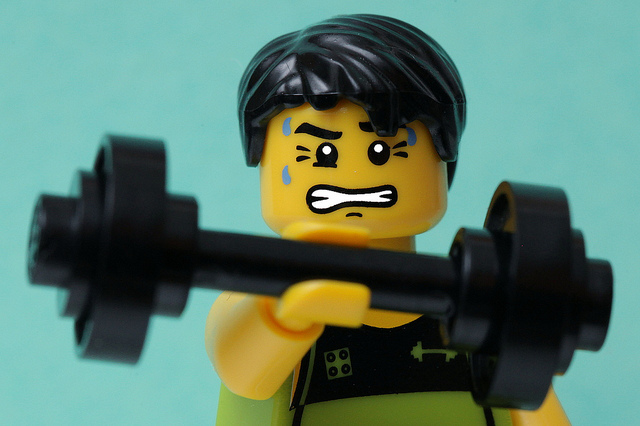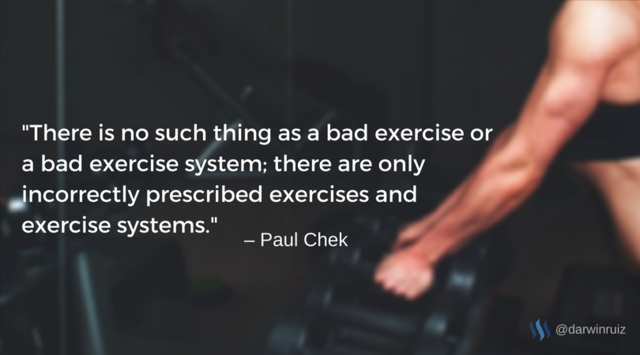Hitting a Wall With Your Workouts?...Here are the 5 Variables You Must Change to Break Through a Training Plateau
Training plateaus are one of the most common issues that you might face when using exercise to stay healthy or improve performance. A plateau occurs when you no longer see any results from your strength, aerobic, or weight loss program.
Exercise, when applied correctly, should give the body the right amount of stress to stimulate recovery and improve any of the 8 biomotor abilities:
- Flexibility
- Endurance
- Strength
- Power
- Speed
- Coordination
- Agility
- Balance
But if you do the same exercise program for too long, you may stop seeing results from your efforts. This can lead to frustration, confusion, and a loss of motivation.

Each exercise in your program will have a specific effect on the body. The right exercise (done correctly) will help you achieve the results you’re after. The wrong exercises—or the right ones performed the wrong way—can have the opposite effect.
The exercises you choose are the most important variable in your routine. Exercises should be changed regularly to avoid hitting the plateaus that occur when the body gets used to a given movement.
Conventional wisdom tells you to “change up your workouts”. Many interpret this to mean that they simply need to do a new set of exercises.
But the exercises you do are just one of many variables that must be understood and manipulated correctly in order to truly overcome training plateaus and continue to see results from your exercise program—regardless of your primary sport or activity.
The 5 Variables of any Exercise Routine
1. Repetitions
Repetitions, or “reps”, are the number of times a movement is performed in a single set without rest. Strength training exercises typically involve a lower number of repetitions when compared to endurance activities such as running, cycling, or swimming.
The number of repetitions has a direct influence on the muscular and neurological responses that occur in the body. Also, the number of repetitions determines the intensity of a given exercise.
Changing the number of repetitions is one of the best ways to overcome a training plateau. It targets different muscle fiber types, elicits a different response from the muscles and nervous system, and leads to different training effects (e.g., more muscle endurance as opposed to muscle strength or size).
”Let the reps dictate the weight.”—Charles Poliquin
Assuming that you’re working to muscular fatigue, the repetitions you choose will dictate the amount of resistance you work against. So you’ll need to adjust your resistance levels accordingly.
2. Sets
Each set of an exercise consists of a given number of consecutive repetitions. For example, in traditional strength training, individuals often complete 3–4 sets of an exercise with each set consisting of 8–12 reps.
But it’s easy to become attached to these numbers, causing your workouts to become stale and making it difficult to achieve results.
The number of sets of a given exercise has an inverse relationship to the number of repetitions. In other words, a higher number of repetitions will require fewer sets to achieve the same response.
Likewise, lowering the number of repetitions (and thus, increasing the intensity) will result in the need to perform a higher number of sets. Changing the number of sets you do can also help you achieve a new level of progress in your exercise program.
3. Tempo
Tempo is simply the speed of movement. Exercises can be done slowly or explosively, depending on your training goals and phase of conditioning. But this is the exercise variable that is most often overlooked, as many people don’t understand the importance of tempo.
The speed at which you perform any given movement affects the total time that muscles are stimulated. Performing exercises at varying speeds can improve strength and performance. Fast tempos stimulate more fast-twitch muscle fibers and results in a higher level of muscle tension.
4. Load/Intensity
The load is the amount of resistance that muscles work against. It’s also referred to as “intensity”, and there are different ways in which you can manipulate the loads used in your exercise program.
Super sets, drop sets, ascending/descending pyramids, and circuit training are just some examples of different loading patterns that can be used.
For the sake of brevity, I won’t go into the details of each. But the important point here is that changing your loading parameters is an essential step in keeping yourself from hitting a wall with your progress.
Also, the level of intensity will determine what response is achieved in the body. High levels of intensity will lead to increases in neuromuscular activity, nerve impulse frequency, and motor unit synchronization.
But remember, the number of repetitions will dictate the actual load being used. So determine what repetition range you want to use (1–5, 6–10, 8–10, etc.) and choose a resistance level that lets you work to fatigue within that range in order to manipulate the intensity level of your program.
5. Rest
Each set of an exercise is followed by a rest period. How long you rest will also influence the results you get out of your workouts.
Rest periods are essential to improving movement skills, increasing strength, and enhancing sports performance. The right amount of rest will depend on exercise intensity, your level of conditioning, and your desired goals.
Short rest periods that follow low-intensity exercises create a more “aerobic” training effect by keeping the heart rate up while longer rest periods allow for adequate recovery of the nervous system when working at higher intensity levels.
When trying to overcome a training plateau, change the rest periods to stimulate your muscular, cardiovascular, and neurological systems in a new way.

Let’s Recap…
Training plateaus occur when you use the same exercise routine in the same way for too long. As the body adapts to the stimulus over time, you may soon struggle to see progress if you don’t manipulate the different variables within your exercise program.
These variables are:
- Repetitions
- Sets
- Load/Intensity
- Tempo
- Rest
There’s much more that can be said about this topic. In the future, I’ll go into more detail about each of these variables, as that might help you better understand how to use them to your advantage.
Recognizing these variables and learning how to manipulate them keeps the body (and mind) challenged. It increases motivation, prevents boredom or burnout, and keeps you on the path to better health and optimal performance on the playing field, at work, or at home.
References:
1. Bompa, Tudor O., and Greg Haff. Periodization: Theory and Methodology of Training. Champaign, IL: Human Kinetics, 2009.
2. Poliquin, Charles. Poliquin principles: successful methods for strength and mass development. Monument, CO: Poliquin Performance Centers, 2006.
3. Chek, Paul. Program Design: Choosing Reps, Sets, Loads, Tempo, and Rest periods. Encinitas, CA: C.H.E.K. Institute, 2002.
This post is part of the 30-Day Writing Challenge that was started by @dragosrua. You can follow the #challenge30days tag to see what others are sharing as part of this challenge.
Image Sources: